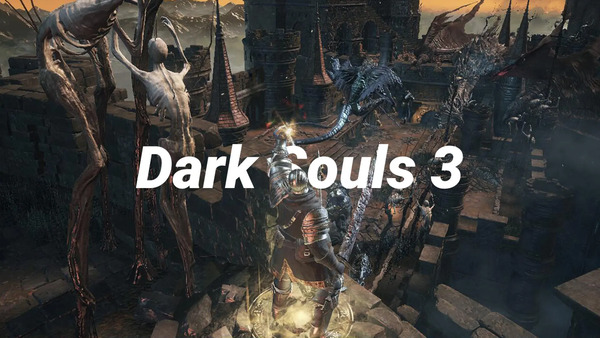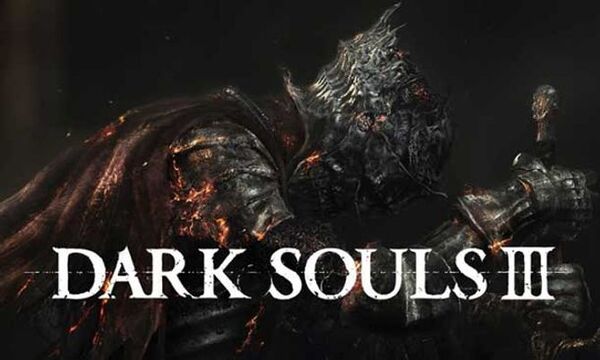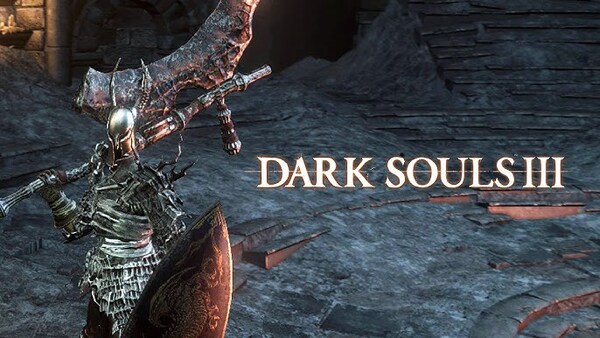Advertisement
Popular Now
Dark Souls III is infamous for its challenging gameplay, intricate world design, and unforgiving mechanics. Whether you’re a seasoned player or a newcomer, the road to mastering this game is one filled with hardship and discovery. In this guide, we’ll take you through essential tips and strategies on how to excel in Dark Souls III, covering everything from basic mechanics to advanced tactics. If you’re looking to overcome the toughest enemies, unravel the game’s secrets, and ultimately emerge victorious, this guide will provide you with the tools and knowledge to succeed.




1. Understanding the Core Mechanics
Learning the Basics
Before diving into the complexities of Dark Souls III, it’s crucial to grasp its core mechanics. Unlike many modern games that hold your hand, Dark Souls III offers minimal guidance, leaving players to figure out how to survive on their own. The key mechanics to focus on initially include stamina management, attacking, dodging, and parrying. Stamina Management: Stamina governs your ability to attack, block, and roll. Keeping an eye on your stamina bar is crucial, as running out can leave you vulnerable to enemy strikes. Combat: In combat, timing is everything. You’ll want to get used to light and heavy attacks, as each has its own advantages. Light attacks are quick, while heavy attacks deal more damage but are slower and leave you more open. Dodging and Rolling: Dodging is your best defense in Dark Souls III. Learn how to time your rolls correctly to avoid enemy strikes. Pay attention to the invincibility frames during your roll, as this will determine if you can avoid taking damage.2. Choosing Your Class Wisely
The Right Class for Your Playstyle
At the start of Dark Souls III, you’ll be asked to choose a class. Each class has different strengths, weaknesses, and starting equipment, and your choice will influence your early gameplay experience. Here’s an overview of some popular starting classes:- Warrior: Offers a balanced mix of offense and defense. Great for beginners who want a straightforward playstyle.
- Pyromancer: Focuses on ranged fire magic and strong melee abilities. Ideal for those who want a versatile class with both close-quarters and ranged options.
- Knight: A heavily armored tank with high health and strength. Perfect for players who prefer to take hits and fight with heavy weapons.
- Thief: Focuses on dexterity and stealth. Excellent for players who enjoy quick, agile combat and sneaking past enemies.
3. Understanding the Importance of Bonfires

Rest and Recovery
Bonfires are your primary means of healing, leveling up, and progressing through the game. They serve as checkpoints and fast travel locations. The process of resting at a bonfire replenishes your health, heals your estus flasks (healing items), and respawns enemies. However, using a bonfire comes with a trade-off: enemies will respawn. Tip: Strategically using bonfires is key. Don’t waste them too early or too frequently, but rest when you need health or want to level up. Also, remember that not all bonfires are created equal—some serve as essential fast travel points, while others are simply for healing.Managing Estus Flasks
Estus flasks are the primary means of healing in Dark Souls III. Early on, you’ll receive a limited number of flasks. These are refilled when resting at a bonfire. As you progress, you can choose to increase the number of Estus flasks or upgrade them to restore more health. Tip: It’s essential to balance your Estus allocation between health recovery and Ashen Estus for casting spells. Too many health flasks will leave you vulnerable without magic, and vice versa.4. Leveling Up and Stats Allocation
Understanding Stat Growth
Leveling up in Dark Souls III is done at the bonfire using souls (which you collect by defeating enemies and bosses). When you level up, you can allocate points to different stats such as Vitality, Strength, Dexterity, Intelligence, and Faith. Choosing the right stats is vital for developing a strong build that complements your playstyle. Vitality: Increases your health and ability to equip heavier armor without slowing down. Strength and Dexterity: These stats are essential for weapon proficiency. Strength boosts heavy weapons, while Dexterity enhances faster, lighter weapons. Intelligence and Faith: These stats govern magic and miracles. Investing in them allows you to cast powerful spells and incantations. Tip: Avoid dumping points into too many stats at once. Focus on a build that suits your playstyle. For example, if you want to be a heavy tank, prioritize Strength and Vitality. For a dexterous ranged fighter, focus on Dexterity.5. Combat Tips for Beginners

Mastering the Basics
Early on, combat can feel overwhelming, but learning the basic principles will help you stay alive. Always keep your shield up or be ready to dodge. Timing your attacks, especially with heavier weapons, is essential to avoid leaving yourself open to enemy strikes.- Blocking and Parrying: Blocking is safe but drains stamina, while parrying leaves enemies open for a riposte, a powerful counterattack. Learn the timing of parries, especially with shields or weapons designed for this purpose.
- Backstabs and Ripostes: Sneaking up behind enemies allows you to land backstabs, which deal massive damage. A successful parry also allows you to follow up with a riposte, dealing even more damage.
- Light and Heavy Attacks: Light attacks are fast and allow for quick combos, while heavy attacks deal more damage but can leave you vulnerable. Experiment with both types to find a rhythm that works for you.
Understanding Enemy Behavior
Every enemy in Dark Souls III has its own attack pattern. Some will charge at you, while others wait for you to make a move. Learning to read enemy behavior is crucial for survival. Tip: Watch the enemy’s animations carefully. The wind-up for a powerful attack is often a clear indicator that it’s time to dodge or block.6. The Art of Exploration
Navigating the World
The world of Dark Souls III is vast, interconnected, and filled with hidden paths, items, and dangers. It’s tempting to rush through the game, but exploring thoroughly can reward you with valuable loot, secret areas, and lore.- Look for Illusions: Many secret walls are hidden in plain sight. Search for walls that seem slightly out of place and try hitting them to reveal hidden areas.
- Shortcut Exploration: Throughout the game, you'll unlock shortcuts that connect distant areas. These are invaluable for quick travel and can save you time when traversing the world.
7. Boss Battles: Preparation and Strategy
Learning Boss Patterns
Bosses in Dark Souls III are a true test of your skills. Each boss has a unique attack pattern, which you must learn to defeat them. Bosses can be tough, but with patience and strategy, you’ll emerge victorious.- Prepare for the Fight: Before entering a boss battle, make sure you have plenty of Estus flasks and any buffs (such as magic or fire resistance) that can help. Sometimes, the right consumable item can make all the difference.
- Boss Moves and Weaknesses: Each boss has weaknesses that can be exploited. Study their movements, and learn when to attack, dodge, or block.
8. The Importance of Gear and Weapons
Choosing the Right Weapon
The variety of weapons in Dark Souls III is vast, and choosing the right one for your playstyle can make a significant difference. Each weapon has unique strengths, attack speed, and scaling with your stats.- Greatswords and Ultra Greatswords: These massive weapons deal huge damage but are slow and leave you open to attack.
- Curved Swords and Katanas: Quick and versatile, these weapons excel at swift, precise strikes.
- Bows and Crossbows: These allow you to attack from a distance, useful for picking off enemies from afar or breaking enemy stances.
Armor and Defense
In Dark Souls III, your choice of armor affects both your defense and mobility. Heavier armor offers better protection but reduces your movement speed, while lighter armor allows for faster rolls and better stamina management. Tip: Find a balance between defense and mobility. Heavy armor may seem appealing, but being able to roll quickly and avoid attacks is often more valuable than just tanking damage.9. Advanced Techniques: Parrying and Riposting
Perfecting Parrying
Parrying is a critical skill in Dark Souls III. It requires precise timing, but when executed correctly, it can allow you to deal massive damage by following up with a riposte.- Timing is Key: To parry, press the appropriate button just before an enemy’s attack lands. If you succeed, you’ll knock the enemy off-balance and open them up for a riposte.
- Ripostes: After a successful parry, perform a riposte to deliver a devastating blow. This can often stagger or even kill bosses and tougher enemies.

















